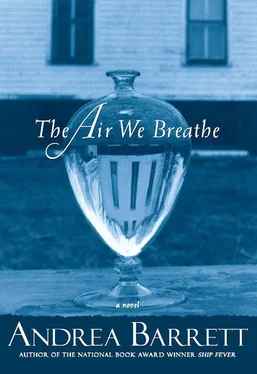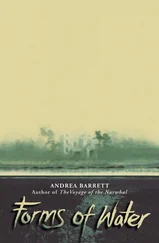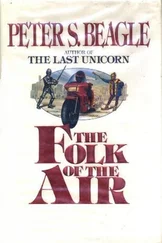Over the course of several nights, she’d told Eudora a little of her history. In Kraków, she’d been raised by her father, after her consumptive mother died. At university she’d studied chemistry and married a photographer but been widowed after only three years. Still in her twenties, she’d decided to come to America to join her sister and her husband, an energetic Czech. For a year, until she too was diagnosed with a mild case of tuberculosis, she’d shared a house with them in New York. Then, at the suggestion of her brother-in-law, who’d finished his medical training by then, all three of them had moved to Colorado Springs, which was filled with people curing in the mountain air.
Not long after Roentgen’s discovery of the rays, she’d been drawn into the excitement. With some borrowed equipment she made plates of her brother-in-law’s chest, and then of her own; once she saw the scars left by her own disease she couldn’t stop experimenting. Her brother-in-law, equally astounded by the discovery and the new possibilities, had been eager to take advantage of the medical applications while she, with her background in chemistry to guide her, quickly learned to make the most of the equipment. Together they’d built a little studio.
“A wonderful room,” she’d told Eudora. “In the back of Joe’s medical office; one of his patients donated the money to build it in memory of his son. Eventually I had my own darkroom, my own induction coil and a tube stand and battery; I ordered them from an advertisement in Scientific American . Later I replaced that apparatus with a much stronger one. I made my first fluoroscope, and my first plateholders. I looked into my own hands, the chests of my sister and her friends, cats and frogs and the trout we caught in the river.” She’d had work, she continued, almost as soon as she’d set up the apparatus. Joe had encouraged his associates to bring in patients with broken bones, and soon others came as well, people with old fractures that had healed poorly, those suspected of having kidney stones. It was practice, she said, that she could have gotten in no other way.
In the glow of the darkroom’s ruby light, taking notes as Irene mixed the chemicals and floated the film in one solution and then another, Eudora had listened intently and tried to remember everything. Once or twice, when she’d had to ask a question, the hint of irritation she saw on Irene’s face reminded her of how patient she’d been so far. “Sometimes,” Irene had said a few days ago, “the best way to learn is just to experiment on ourselves.”
Which was how Eudora had reached this evening, finally about to see the inside of her own chest. She’d unlaced and stepped out of her shoes, removed her blue apron so the buttons wouldn’t interfere, and slipped off her blouse. Dressed only in her skirt and stockings and camisole, she stood motionless in the darkened room between the two upright poles of the tube holder. Irene adjusted the height of the crossbar. Inside the suspended wooden box, hidden except for the rounded surface gleaming through the glass port, the powerful new tube — a high-vacuum Coolidge tube with a tungsten target that Irene had recently acquired — warmed up.
Irene, who’d been peering at the coated cardboard of the fluoroscopic screen, moved behind Eudora and opened the port so she could replace one lead diaphragm with another. “That should work better,” she said.
Returning to the screen, she lowered her goggles and peered through the dark red glass. “Lift your arms. When I tell you to, take a deep breath and then hold it. Ready?”
“Ready,” Eudora said.
“Lovely,” said Irene, before falling silent for half a minute. “Release it — good. Now just breathe normally for a bit.”
What, Eudora wondered, was she seeing?
“Excellent lungs,” Irene said approvingly. “If you give me another few minutes I’ll take a radiograph.”
In the darkroom, earlier, she’d shown Eudora how to load the metal holders with the floppy sheets of nitrocellulose film. The glass plates she’d used before weren’t available anymore, she said; they were made in Belgium. But the film had its own advantages, which now, as she moved Eudora away from the tube holder, took some measurements, and positioned another stand, Eudora began to see. The film holder slipped weightlessly, easily, into the frame on the stand.
“Hold your breath again,” Irene directed. Something whirred and she looked intently at her timer. “I like this tube, it’s so much easier to use. The exposure time is far shorter, too — but it almost makes me unnecessary. The old gas tubes were so idiosyncratic that it took a real knack to get good images using them, but these — I could train you to use this in a couple of months. You can step away, now.”
The red goggles lay on the table; Eudora picked them up and peered through them but could see nothing. As she handed the goggles back, Irene said, shyly but also with a note of pride, that in her early days she’d done so many experiments that she’d been asked to meetings, and published papers, and consulted for doctors all over the country. “I made a reputation in Colorado,” she confided, “almost by accident. But it was enough that, when the doctors here decided they wanted someone to set up and run an X-ray facility, they contacted me despite my lack of medical training.”
“They didn’t mind that you…?”
“That I’m a woman?” Irene curled her lip. “They probably did mind. But not enough to keep them from hiring the best person they could for the pitiful salary they offered.”
Interesting, Eudora thought. Those little spurts of anger, so seldom released. “Is that when you hurt your hands?” she asked. “When you were setting up the equipment here?”
Irene tucked her gloved left hand — we’d all been curious about that glove, which she never explained but which was always present, and always some shade of violet — into her pocket, holding out her naked right hand for Eudora’s inspection. The skin had the color and texture of leather and three nails were missing completely, while the other two were thick and misshapen, veiled by overgrown cuticles. She stretched out her stiff fingers before closing them into a fist.
“I think I did most of the damage in Colorado,” she said, “during the late 1890s and the early years of this century, when we didn’t have any idea that the rays might be harmful. I used to test different Crookes tubes by holding my left hand between the tube and the fluorescent screen and then adjusting the anode until I got a good image.”
Before long, the skin on her left hand had dried and cracked, and then the hand had swollen as if she’d burned herself. Later the skin came off completely along with her fingernails and the little hairs. But this, she explained, had happened to everyone; it had seemed like a bad sunburn and everyone assumed that the effects of the Roentgen-ray dermatitis were temporary. They’d used petroleum jelly to protect themselves, and gloves. Later, when news began to spread about some who’d worked with the machines, she’d covered her hands with tinfoil and also built some different shielding for the beam. Perhaps those efforts had saved her right hand from the worst damage.
“Probably I was too late for this one, though,” she said, freeing her left hand from her pocket and turning it front to back as if inspecting the dark violet cloth for holes.
“Can I see?” Eudora asked.
Irene shrugged. Until then, she’d shown only Dr. Petrie what lay beneath the glove. “If you want.” Slowly, pulling from the tip of each finger, she peeled off the glove, taking with it three of the fingers as well.
“Surgical cotton,” she noted, holding the glove out for Eudora’s inspection. “I stuff the finger holes to look like a normal hand, so people don’t have to think about what’s underneath.”
Читать дальше












